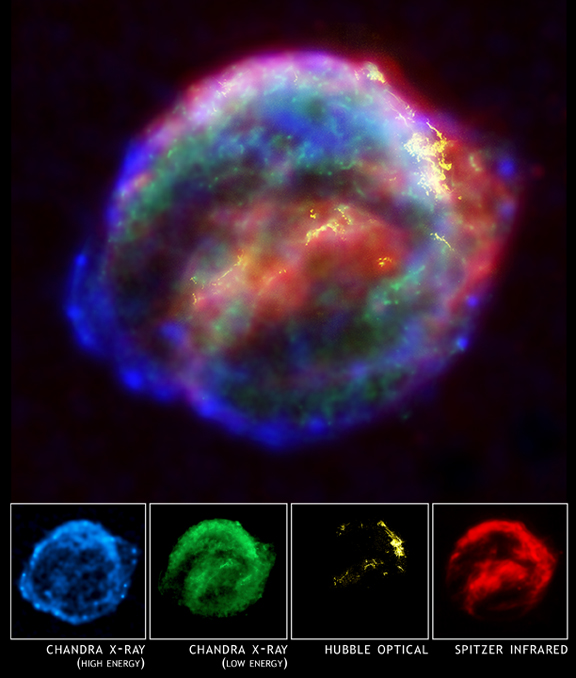
Keeper's supernova, even though is was observed by many other people, was the last supernova to occur in the Milky Way. It is amazing that this supernova was recorded considering it happened in the 1600s when there were no telescopes and only sextants and the naked human eye. The remnants of Keeper's supernova are iron rich particles that are surrounded by an expanding shock wave, 14 light years wide, and expanding at a rate of 4 million miles per hour. The following image was compiled using four different images obtained by various telescopes. The Hubble telescope image is colored yellow and represents the densest areas of gas where the shock waves are hitting. The Spitzer infrared images show microscopic dust particles that have been heated by the shock wave. The Chandra X-ray data shows the regions of very hot gas particles with very high energy, and there are two images to show the slightly lower temperature gases and higher temperature gases. t is interesting to note that the brightest areas on one image correlate with the bright areas on another image. All in all, the image is spectacular.
